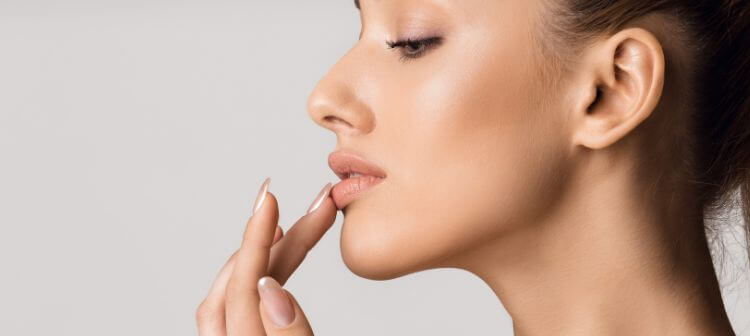Lip fillers are the most requested procedure in the UK, popular with women of any age that want more enhanced pouts or to reverse ageing changes to the lips. Temporary hyaluronic acid dermal fillers are a highly effective, minimally invasive procedure, but it’s important to be aware that even non-surgical treatments involve some downtime and potential risk.
Here’s the Karidis Clinic guide to what to expect after your lip filler treatment.
How much swelling is normal after lip fillers?
Swelling at the injection sites is common after a lip filler treatment. This is the body’s natural response to the minor trauma that is caused by injections.
Any damage to the skin causes the body to flood the area with white blood cells which results in swelling, redness, and heat from increased blood flow. The lips are particularly susceptible because there are so many blood vessels. Hyaluronic acid dermal fillers are also more prone to swelling as they act as humectants, attracting 1,000 times their weight in moisture.
Lip swelling after one day: what to expect
At Karidis Clinic, we advise patients that the first day is the worst for lip swelling. The lips will look very swollen but don’t worry! Within the next 48 hours, it should start to dissipate.
Lip swelling after one week: what to expect
Any swelling will be at its worst in the first week. Do not worry if the lips look uneven at this stage, as this is usually due to inflammation rather than the dermal fillers.
You can also expect bruising to appear around the third or fourth day. If the lips appear lumpy, this should resolve by the end of the first week.
Lip swelling after two weeks: what to expect
A noticeable reduction in swelling will be apparent, and you should see the final result of your lip filler treatment in this period. If swelling persists after these two weeks, get in touch with us to assess your body’s response to the treatment.
How can you reduce lip filler swelling?
Our most important tip to minimise lip filler swelling is to avoid excessive heat, such as saunas or steam rooms, in the first 48 hours after your treatment. Extreme exertion in terms of a hot and sweaty workout is also to be avoided. Low-impact exercise such as walking is preferred.
Drinking plenty of water supports the body’s natural healing process and avoid too much salt in your diet. Applying a cold compress or a wrapped ice pack can help reduce swelling, but don’t place ice directly onto the lips.
Time of year also plays a part, as you may experience more swelling during summer. Do not put any pressure on the lips, so sleep on your back or with your head elevated on pillows.
Swelling or inflammation is the most common downside of lip fillers and will usually disappear entirely in the first week or two after your procedure. If you’ve questions about any possible complications, call 0207 432 8727 to arrange a consultation with one of our aesthetic practitioners.
What are the possible risks after a lip filler treatment?
Bruising and bleeding
The most common occurrence after a lip filler treatment is bruising and bleeding. The lips are highly vascular, and even the most experienced and gentle aesthetic practitioner will disrupt the many tiny capillaries in the lips.
Various clinical studies have evaluated bruising after injectable fillers, and one study found it occurred in up to 24% of patients, whereas another reported it as high as 68%.
Minimise this risk by avoiding blood-thinning medications like ibuprofen or aspirin before your procedure.
Lip asymmetry
Choosing a skilled aesthetic practitioner is the best way to avoid this possible complication, but a follow-up procedure may be required to address any concerns.
Lumps and bumps
Poor injection technique increases your risk of lumps forming in the lips so an experienced injector can minimise his risk.
Vascular occlusion
Injection into a major blood vessel can cause tissue necrosis, but this is an extremely rare, although very dangerous lip filler risk.
Excessive swelling
Although a plumper pout is often the desired result of lip augmentation, you will usually experience excessive swelling in the first week or two after your procedure.
















